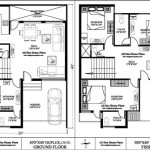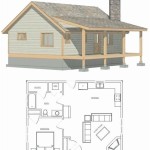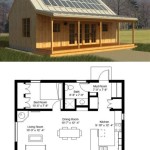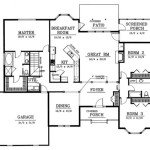Electrical House Wiring Floor Plan: A Guide to Safe and Efficient Electrical Wiring
A well-designed electrical house wiring floor plan is essential for ensuring the safety and efficiency of your home's electrical system. It serves as a blueprint for the placement of electrical outlets, switches, lighting fixtures, and other components, ensuring that they are properly spaced and meet code requirements. In this article, we will explore the key aspects of electrical house wiring floor plans and provide insights into creating an effective and safe layout for your home. ### Importance of Electrical House Wiring Floor Plans 1.Safety:
An electrical house wiring floor plan helps avoid potential electrical hazards by ensuring that electrical components are properly installed and spaced according to code requirements. This minimizes the risk of electrical fires, shocks, and other accidents. 2.Efficiency:
A well-planned electrical layout optimizes the use of electrical circuits, preventing overloading and ensuring that each circuit can handle the load placed on it. This promotes efficient energy usage and reduces the risk of circuit breakdowns. 3.Convenience:
A well-designed floor plan considers the placement of electrical outlets, switches, and lighting fixtures to maximize convenience and functionality. This ensures that you have easy access to power sources and can control lighting and appliances from convenient locations. 4.Future-Proofing:
An electrical house wiring floor plan should take into account potential future needs and renovations. This allows for easy expansion or modification of the electrical system as your needs change, without having to undertake costly rewiring projects. ### Steps to Create an Effective Electrical House Wiring Floor Plan 1.Assess Your Needs:
Start by identifying the electrical needs of each room in your home. Consider the appliances, lighting, and other electrical devices you will use in each space. Make a list of these needs to help you determine the number and location of electrical outlets, switches, and lighting fixtures required. 2.Study Local Building Codes:
Before creating your floor plan, familiarize yourself with the local building codes and regulations that apply to electrical installations. These codes specify the minimum requirements for electrical safety and ensure compliance with industry standards. 3.Choose the Right Circuit Breaker Panel:
Select a circuit breaker panel with sufficient capacity to handle the total electrical load of your home. Consider future expansions and renovations when choosing the size of the panel. 4.Determine Circuit Layout:
Divide your home into logical circuits based on the electrical needs of each area. Typically, each circuit should serve a specific area or group of rooms. This helps distribute the electrical load evenly and prevents overloading. 5.Plan Outlet and Switch Locations:
Carefully consider the placement of electrical outlets and switches to ensure they are conveniently accessible and meet code requirements. Place outlets near appliances, furniture, and work areas. Switches should be located near doors and at the entrances of rooms. 6.Plan Lighting Layout:
Designate locations for lighting fixtures in each room, considering the type of lighting (ambient, task, or accent) required. Ensure that lighting fixtures are evenly distributed to provide adequate illumination throughout the space. 7.Create a Detailed Diagram:
Once you have determined the location of electrical components, create a detailed diagram or floor plan that clearly shows the layout of circuits, outlets, switches, lighting fixtures, and other electrical elements. This diagram will serve as a guide for the electrical contractor during installation. 8.Hire a Qualified Electrician:
Engage a licensed and experienced electrician to install your electrical system according to the approved floor plan. Ensure that the electrician adheres to code requirements and industry best practices. ### Conclusion A well-designed electrical house wiring floor plan is a crucial aspect of home construction or renovation. By following the steps outlined in this article, you can create a safe, efficient, and convenient electrical layout that meets your specific needs and complies with local regulations. Remember to work closely with a qualified electrician to ensure a proper and code-compliant installation. A well-planned electrical system will not only enhance the functionality and safety of your home but also provide peace of mind knowing that your electrical needs are met effectively and efficiently.
Free House Wiring Diagram Edrawmax

Home Wiring Plan Making Plans Easily House Electrical Layout
Create An Electrical Plan Roomsketcher Help Center

Free House Wiring Diagram Edrawmax

Floor Plan And Wiring Diagram Scientific

Electrical House Plan Details Engineering Discoveries Wiring Diagram Home

House Wiring Diagram Everything You Need To Know Edrawmax

Home Electrical Drawings Cad Pro

Home Wiring Plan For Electrician Team Edrawmax Free Editable Template House Electrical Electric

It S Electrical








